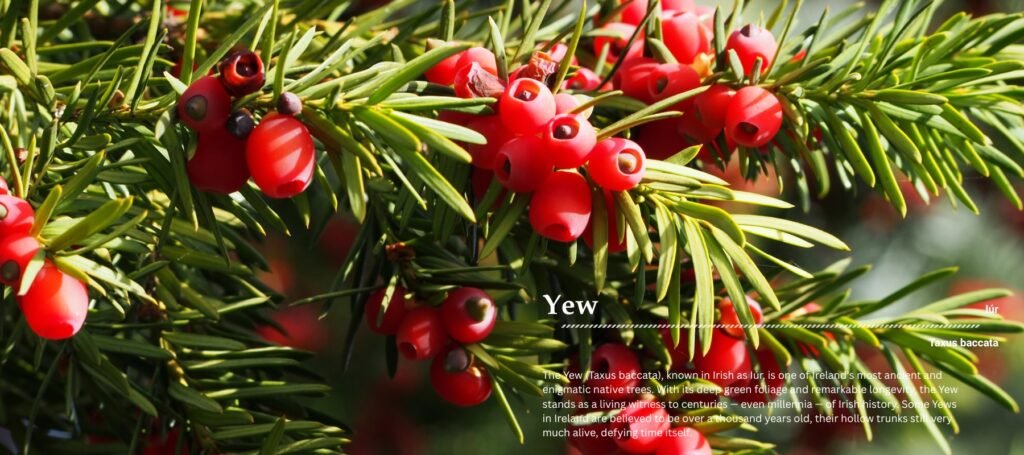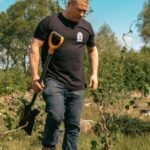A Tree of Life, Death, and Rebirth
In Irish mythology and Celtic symbolism, the Yew was deeply connected to the cycles of life, death, and renewal. It was believed to stand at the threshold between worlds, a tree that held wisdom of both the living and the dead. Many ancient Yews grow in churchyards, older than the buildings beside them, representing continuity across ages and beliefs.
In the ancient Ogham tree alphabet, the Yew was represented by “Idho”, a symbol of endurance and rebirth. Warriors once carried bows made from its strong, flexible wood, and poets revered it as a tree of reflection and insight.
A Haven for Wildlife
Though the Yew grows slowly, it sustains life in many quiet ways. Its evergreen canopy offers shelter for birds, mammals, and insects all year round, especially in the colder months when other trees are bare. The bright red arils, the only non-toxic part of the tree provide valuable winter food for birds such as thrushes, waxwings, and blackbirds.
While most parts of the Yew are poisonous to humans and livestock, Ireland’s wildlife has evolved alongside it, finding safe nourishment and refuge within its branches. Its dense foliage creates a sanctuary that endures even in the harshest seasons.
Strength in Stillness
The Yew is a master of patience. It grows slowly, but its roots reach deep and its wood resists decay. These qualities make it a powerful stabiliser of the landscape, anchoring soil and providing structure to shaded and marginal woodland areas.
Its evergreen nature ensures that even in winter, when much of the woodland sleeps, the Yew keeps its rich colour and quiet strength. In this constancy lies its power, a reminder that growth does not always need to be fast to be meaningful.
Planting for Eternity
When you plant a Yew with Grown Forest, you are planting for the far future. These trees may outlive us by centuries, quietly holding space in the landscape and continuing to give long after we are gone.
The Yew teaches patience, endurance, and the beauty of persistence. It asks us to think beyond our own lifetimes, to plant not for today, but for tomorrow’s forest. In the shelter of the Yew, the passage of time feels slower, and the legacy of your planting becomes part of something truly eternal.

